 |
Photo #1: The broken
pull bucket and the missing coin box and vault door. I have
obtained a coin box as of the end of August 2000 but still need to find
a vault door. The coin-return pull-bucket is still in disrepair -
not sure what I'm going to do to fix it - I may just find a replacement
for it. |
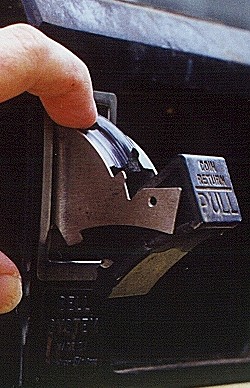 |
Photo
#2: The broken pull bucket viewed from another angle. |
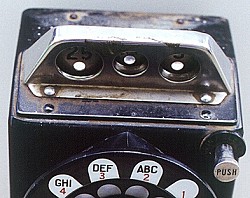 |
Photo #3: The dirt and
corrosion on top where the coins are deposited. I was able to
clean all the non-painted metal pieces pretty clean after taking these
pictures. |
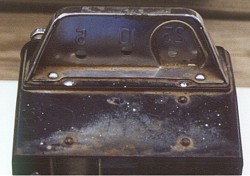 |
Photo #4: Back view of
where coins are deposited and rear side of the top of phone. |
 |
Photo #5: The back of the
telephone. |
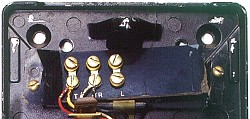 |
Photo #6: The broken
terminal strip. A replacement was sent to me soon after this picture was
taken. |
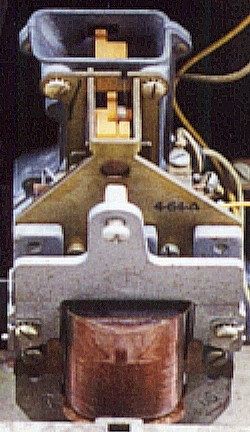 |
Photo #7: The coin relay -
view 1. Normally there is a plastic "hat" over the top
of this assembly to keep stray coins from shorting things out in the
contacts of the relay or mechanically jamming it. A replacement
hat was donated to me soon after this picture was taken. |
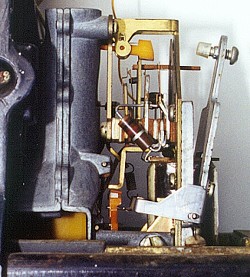 |
Photo #8: The coin relay -
view 2
(left side as you face front of phone). |
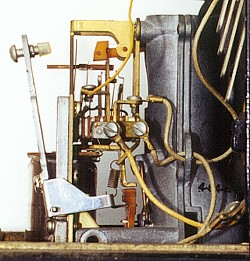 |
Photo
#9: The coin relay -
view 3
(right side as you face front of phone). |
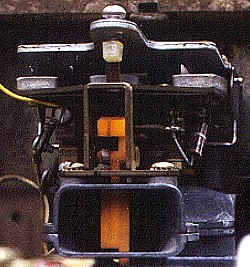 |
Photo
#10: The coin relay -
view 4
(looking down from above relay, front of phone would be toward top of
this picture) |
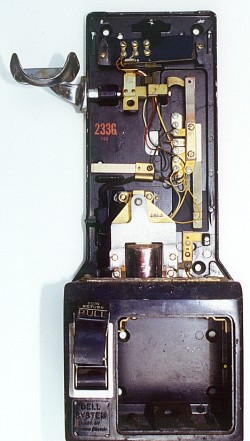 |
Photo
#11: The back plate which contains the
switch-hook assembly. Also shown is the coin relay assembly, the
pull bucket, and opening for
the coin box and vault door. |
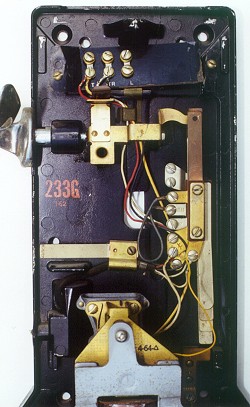 |
Photo
#12: Close-up showing broken terminal strip at top, the switch-hook
assembly, old handset cord entrance (about 2/3 down the picture) and top
part of coin relay. |
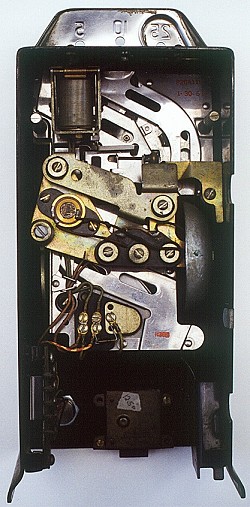 |
Photo
#13: Close-up showing inside view of "top" housing. Note
electromagnet in upper left corner. Also seen here is the solid gong on
the extreme right side about half way down (edge of bell showing).
More details on this later on. |
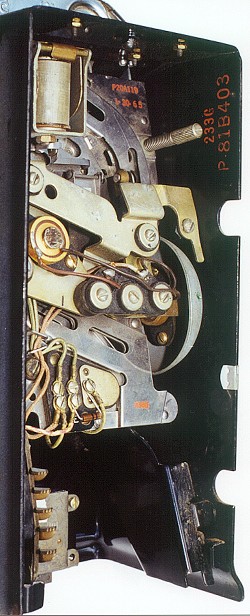 |
Photo
#14: Same section of phone as in photo #13 above but viewed from an
angle to show underneath view of bell (half-way down on the right side
of housing) and other mechanical parts from a different viewing angle. |
 |
Photo
#15: Same section of phone as in photo #13 above but viewed from an
angle to show spiral metal "spring" called the cathedral
gong (half-way down on the left
side of housing) which makes a "bong" sound when quarters are
deposited in the phone. Also in this view you can see the "nickel"
electromagnet and the
interconnecting contacts (lower left part of picture) which makes all
electrical connections between the upper and lower housing assemblies
when phone is assembled. |
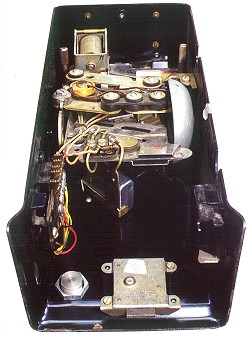 |
Photo
#16: Same section of phone as in photo #13 above but viewed from an
angle to show lock (bottom center of housing) and a metal can capacitor underneath the
sub-chassis and mounted at an angle
(just below the middle of picture and above the 10G lock). |
 |
Photo
#17: This is the front view of the upper housing. |
 |
Photo
#18: Bottom of lower housing showing paint condition.
|

